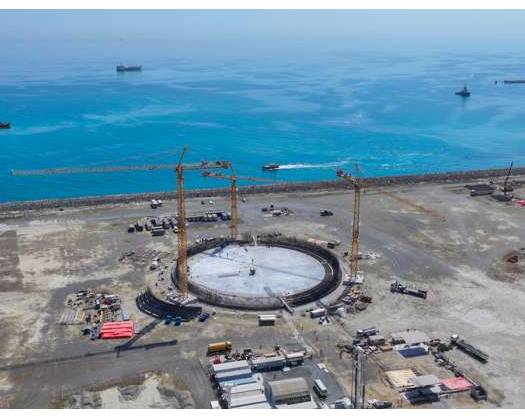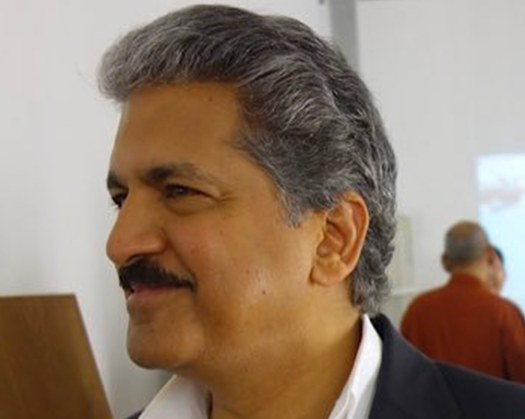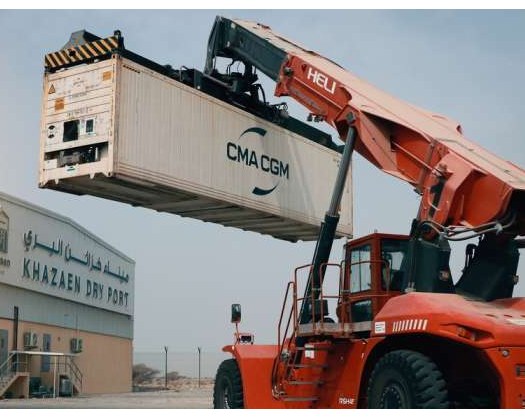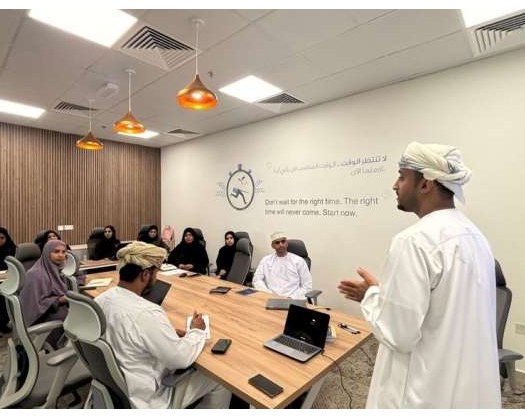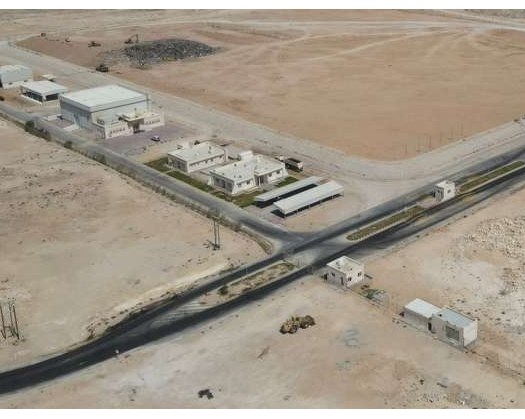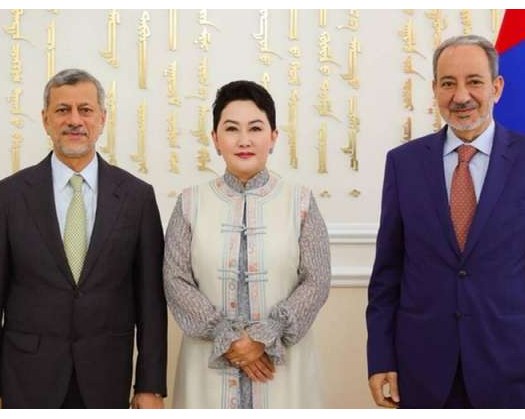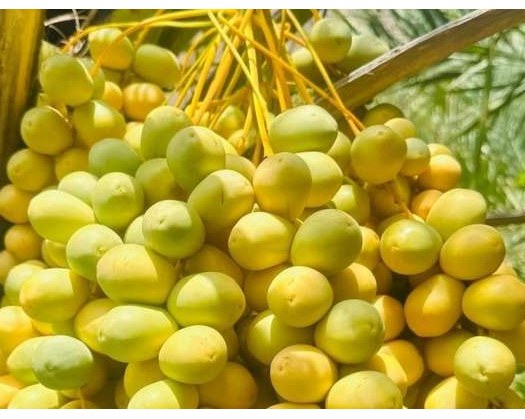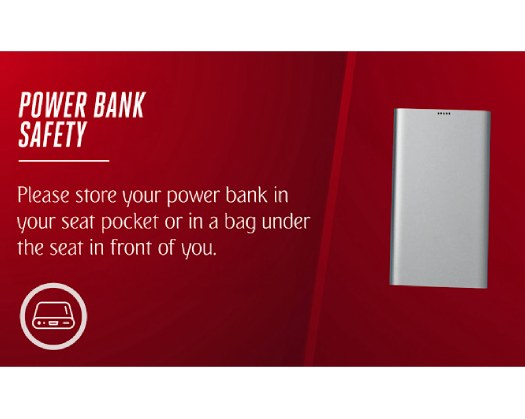Sohar: On Thursday, the Wilayat of Sohar hosted the ceremonial start of the Marsa LNG initiative, heralding the commencement of the largest collaborative investment from OQ Exploration and Production (OQEP) and TotalEnergies. This project, estimated at $1. 6 billion, sees TotalEnergies possessing an 80% ownership share while OQEP retains the remaining 20%.
The ceremony was conducted under the auspices of Eng. Salim Nasser Al Aufi, Minister of Energy and Minerals, and was attended by high-ranking officials from TotalEnergies, global investors, and leaders from the business community.
Marsa LNG illustrates OQEP's strategic aim to enhance Oman’s energy sector by cultivating sustainable long-term value. This initiative also signifies the company's foray into LNG bunkering, complementing its vision for a more sustainable energy future. Additionally, it is anticipated that the project will promote In-Country Value (ICV).
By executing the Marsa LNG project, Oman is poised to further solidify its role as a regional center for clean marine fuel, symbolizing a strategic alliance between OQEP and TotalEnergies. This collaboration serves as an exemplary model of international teamwork in developing clean energy initiatives, directly contributing to economic diversification efforts, drawing in foreign investments, and boosting In-Country Value, all in keeping with Oman Vision 2040.
The initiative will provide ships with liquefied natural gas (LNG) as a fuel source, aiding the reduction of the carbon footprint within the maritime transport industry through the establishment of low-emission facilities.
Eng. Salim Nasser Al Aufi remarked, “The Ministry of Energy and Minerals reaffirms its dedication to advancing downstream energy projects, which play a vital role in fostering economic integration across industrial, trade, port, and logistics sectors. The Marsa LNG initiative, a strategic alliance between OQ Exploration and Production and TotalEnergies, encapsulates this vision by developing infrastructure aimed at supplying ships with liquefied natural gas as a cleaner fuel alternative. ”
He continued, “This undertaking signifies a significant advancement towards adopting low-emission energy, reinforcing Oman’s standing as a dependable regional center for clean marine fuel. It supports the principles of Oman Vision 2040 regarding sustainability and industrial innovation. We hold this partnership in high regard and believe that investments in downstream energy will spur economic growth, generate high-quality and enduring job opportunities, facilitate knowledge transfer, and empower local talent to fulfill the increasing global demand for sustainable energy. ”
Patrick Pouyanné, Chairman and CEO of TotalEnergies, expressed, “I am immensely proud to witness the beginning of Marsa LNG, in collaboration with our established partner OQEP, supported robustly by Oman’s authorities. This flagship project underscores that LNG production can achieve very low carbon outputs, positioning gas as a long-term transitional fuel. With a bold technical framework, we aim to establish benchmarks and pave the way for the next generation of low-emission LNG facilities globally. Furthermore, we present an effective solution to aid the energy transition in the shipping sector by delivering lower-emission marine fuel in a strategically important location at the entrance of the Gulf. ”
Eng. Ahmed Al Azkawi, the CEO of OQEP, stated, “Our commitment at OQEP revolves around fostering innovation and sustainability within Oman’s energy industry. The Marsa LNG initiative signifies a significant advancement, utilizing state-of-the-art technology and strategic partnerships to pave the way for a cleaner and more affordable energy horizon. As the premier LNG bunkering facility in the Middle East, Marsa LNG is set to play a crucial role in minimizing emissions in the maritime sector while solidifying Oman’s role as a prominent entity in the international energy landscape. ”
This initiative encompasses both upstream and downstream elements. The upstream aspect entails extracting 150 million standard cubic feet of gas per day from Concession Block 10, which will subsequently be delivered through OQ’s gas distribution network to Sohar Port. The downstream element involves constructing an LNG facility with a yearly capacity of one million tonnes, aided by a solar power installation rated at 300 megawatts to fulfill the site's annual energy requirements.
The Marsa LNG initiative involves establishing a facility that will emit less than 3 kilograms of CO₂ equivalent for each barrel of oil equivalent to mitigate greenhouse gas output, along with launching the inaugural LNG bunkering hub in the Middle East.
This initiative will utilize solely electric power, positioning it as the lowest-emission LNG facility globally. With its all-electric configuration and the incorporation of a solar energy plant, it is anticipated to prevent over 200,000 tonnes of CO₂ equivalent emissions yearly throughout the project's duration, compared to a traditional gas-powered model.
The Marsa LNG project will be driven by gas production of 150 million cubic feet per day from the Mabrouk North-East region in onshore Block 10. Marsa possesses a 33. 19 percent stake in this field, thereby assuring its entitlement and guaranteeing a consistent supply of feedstock for the LNG liquefaction plant being established in Sohar.
The downstream section includes a cutting-edge LNG liquefaction facility with a capacity of 1 million tonnes annually, now under development at Sohar Port. It is anticipated that LNG production will commence in the first quarter of 2028, primarily serving the marine fuel sector (LNG bunkering) within the GCC region. Notably, the Marsa LNG complex will operate entirely on electricity sourced from solar energy, positioning it among the LNG plants globally with the lowest greenhouse gas (GHG) intensity, featuring emissions substantially below 3 kg CO2e/boe, which is nearly 90 percent less than the industry average of 35 kg CO2e/boe.
The complete electrification of the LNG facility will yield over a 6 percent boost in net production, with 99 percent of the incoming natural gas transformed into LNG. This arrangement provides enhanced operational adaptability and lower maintenance expenses. Additionally, the site will be outfitted with integrated infrastructure, including a 165,000 m³ LNG storage tank and a 500-meter jetty designed for accommodating bunkering vessels and LNG carriers for regional exports.
A solar power facility capable of generating 300 MWp will be established on an area of 450 hectares to fulfill the complete energy requirements of the LNG plant. This solar installation will incorporate 500,000 cutting-edge bifacial photovoltaic panels equipped with single-axis tracking systems, advanced inverters, and an Energy Monitoring System (EMS) to guarantee consistent energy output. This project is in accordance with Oman’s national energy framework, which aims to elevate the proportion of renewable energy in its overall energy portfolio to 30 percent by the year 2030, in alignment with the goals of Oman Vision 2040.
The Marsa LNG project is strategically positioned in Sohar, situated at the entrance of the Gulf, which is a vital international shipping route. TotalEnergies has launched a new LNG bunkering vessel named Monte Shams, with a capacity of 18,600 m³. This vessel honors Oman’s Jabal Shams, also known as the "Mountain of the Sun," and is scheduled to commence operations in mid-2028, expanding TotalEnergies' fleet, which already includes Gas Agility from Rotterdam, Gas Vitality from Marseille, and Brassavola from Singapore.
Equipped with top-tier technology, the Monte Shams will feature an engine that enhances fuel efficiency by 7 percent while maintaining high combustion performance to minimize methane emissions. Additionally, the vessel will include continuous emissions monitoring systems and will participate in regular leak detection and repair (LDAR) initiatives, adhering to the strictest technical and environmental guidelines in maritime fuel operations. It will cater to a wide array of vessels, such as container ships, tankers, and large cruise liners.

